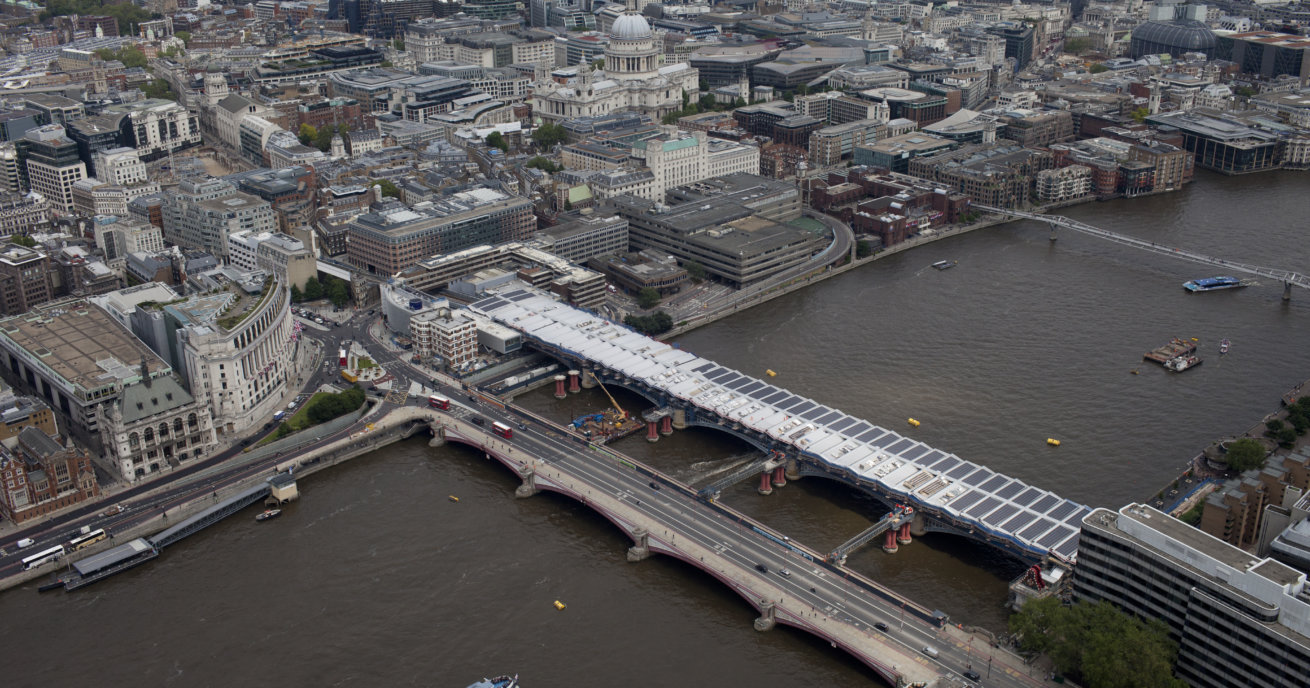The railway is already one of the most environmentally friendly ways to travel – and we’re working hard to make it even greener.
In fact, we recently published our Environmental Sustainability Strategy, which sets out our vision to serve Britain with the cleanest, greenest mass transport.
Here are six times we’ve improved sustainability around the network …
1 – Solar power at a Hampshire station
We’re replacing the footbridge at Liphook station in Hampshire to give you better access.
The station, on the Portsmouth line, carries services to Portsmouth Harbour and London Waterloo.
We’re replacing the old footbridge with a more durable, modern steel one. It will be fully enclosed and will have lifts for step-free access between platforms for disabled passengers, people with pushchairs and cyclists.
Sustainability is at the heart of the project, with a solar-powered generator used to power the site accommodation.
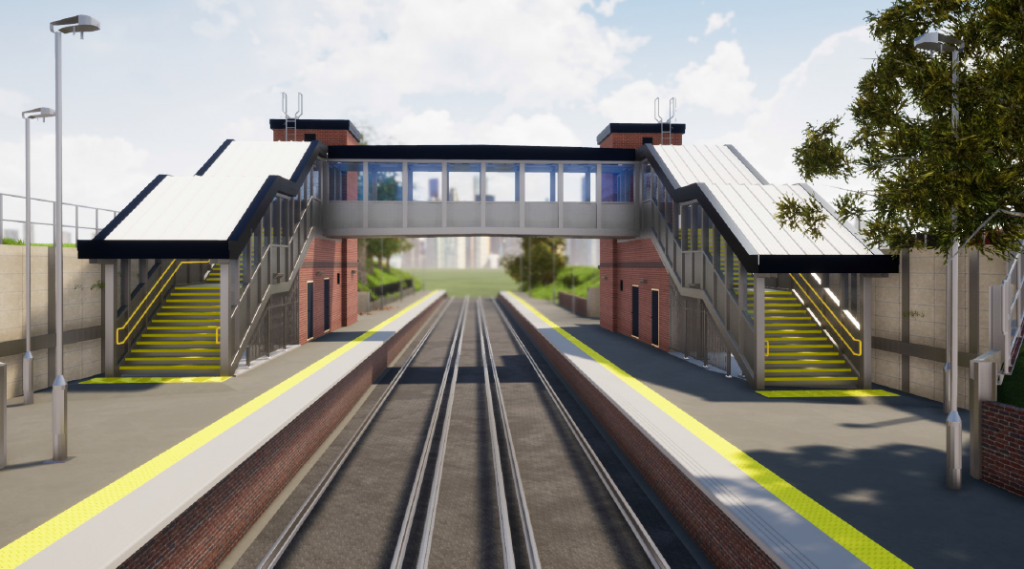
The project team also worked with ecologists to relocate slow worms onto nearby land, and are reusing excavated earth from the railway cutting, rather than bringing in new materials.
2 – Riding Sunbeams
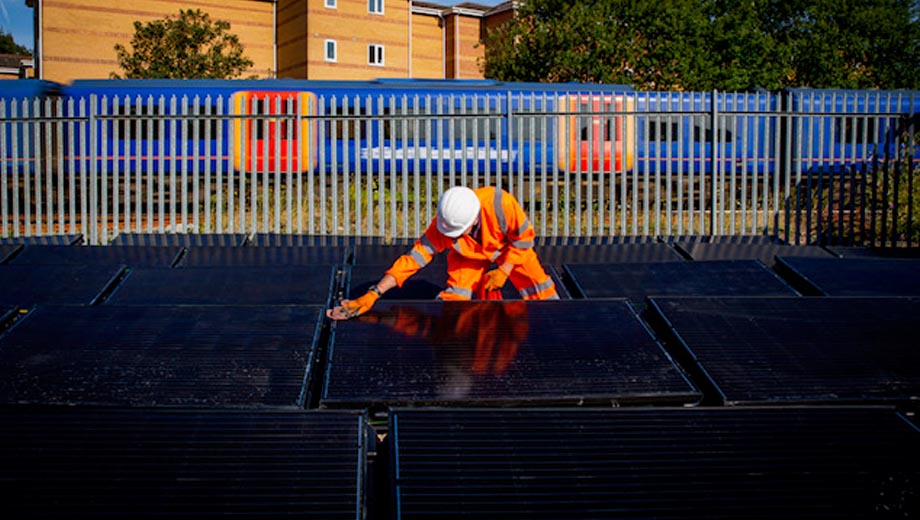
In 2019, we worked with social enterprise Riding Sunbeams in a pioneering trial to use solar energy to partly power a railway line.
It involved the first ever solar panels to directly supply a railway line with electricity, paving the way for the world’s first solar-powered trains.
The innovative scheme would prove solar can safely bypass the grid to provide a direct supply of energy to Britain’s railway’s traction systems without disrupting train operations – something never done anywhere else in the world.
We hope to save £3.5bn through a variety of cost-saving initiatives in the next few years. We estimate solar energy could provide 10% of the energy needed to power trains on Britain’s electrified third rail routes, mostly found on tracks in the South East of England.
In September last year, Riding Sunbeams secured investment to help provide a commercial route to market for community energy groups looking for projects to develop and connect them to operators like Network Rail.
Leo Murray, director of Riding Sunbeams, said in 2019: “Matchmaking the UK’s biggest electricity user, the railways, with the nation’s favourite energy source, solar power, looks like the start of the perfect relationship.
“Helping to get the railways off fossil fuels in this way will cut running costs and benefit local communities at the same time as helping to tackle the climate crisis.”
3 – Site of the Future
A project led by us and contractor Colas Rail in May 2019 used solar lighting and power generation. This achieved a 97% diesel-free operation and prove the viability of a sustainable ‘Site of the Future’.
The major rail renewal project at Llanwern, South Wales, used solar and battery technology from Prolectric instead of diesel generators to save 6,000 litres of fuel and more than 15 tonnes of CO2over two weeks.
It was an environmental milestone towards clean, carbon-free off-grid working. It supported of our target to reduce non-traction energy consumption by almost 20% and carbon emissions by 25% by 2024.
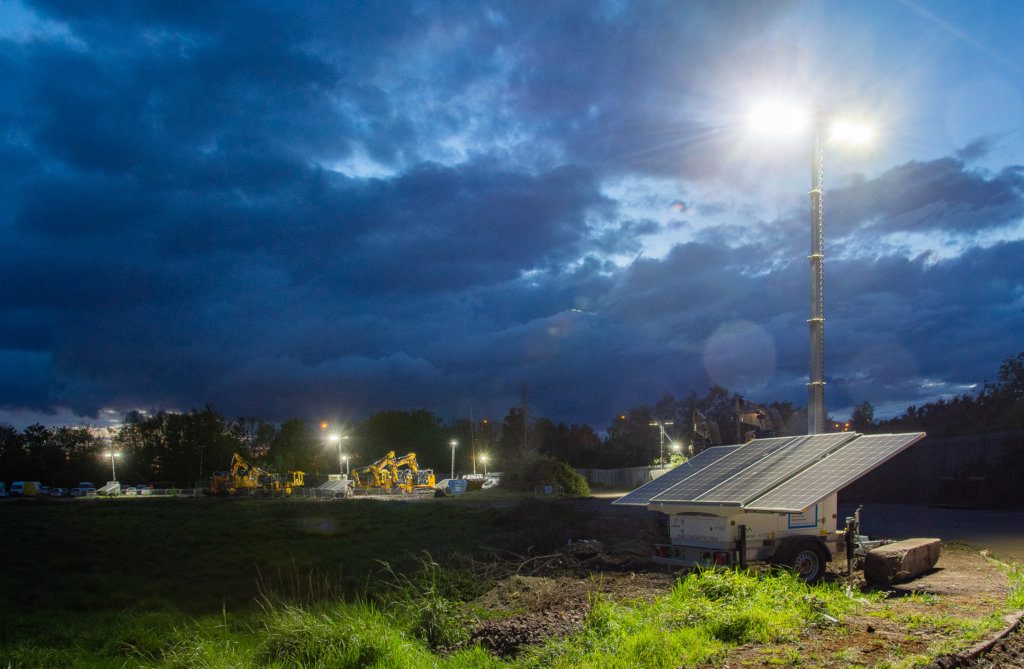
4 – London King’s Cross
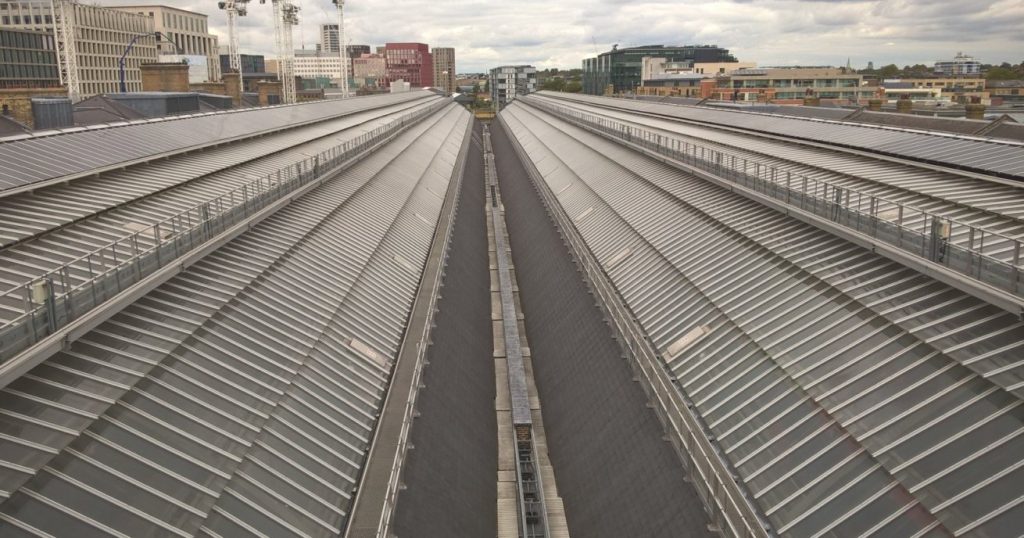
In 2018, we shared how we had begun to see tangible benefits from a range of eco-friendly initiatives it introduced at London King’s Cross railway station.
We introduced a range of measures to make the station more sustainable during a huge refurbishment at the station, which took place between 2006 and 2012.
These included rainwater harvesting, water saving taps, extra insulation and 2,300 square metres of solar panels.
The solar panels were specially designed to integrate with the iconic design of the Grade I listed building and had already reduced carbon dioxide emissions at the station by more than 40 tonnes.
The panels had generated one million kilowatts of electricity, enough to power 38 homes for a full year, saving us £125,000 in utility costs.
5 – World’s largest solar bridge
We rebuilt Blackfriars railway station in 2011 and 2012, creating the world’s largest solar bridge. This huge feat included more than 4,400 solar photovoltaic (PV) panels.
The Victorian bridge, built in 1886, was the foundation for the new Blackfriars station. We upgraded the station to cater to more passengers and an enable improved train services.
A new roof, added to the historic structure, incorporated more than 6,000m2 of PV panels, creating the biggest solar array in London.
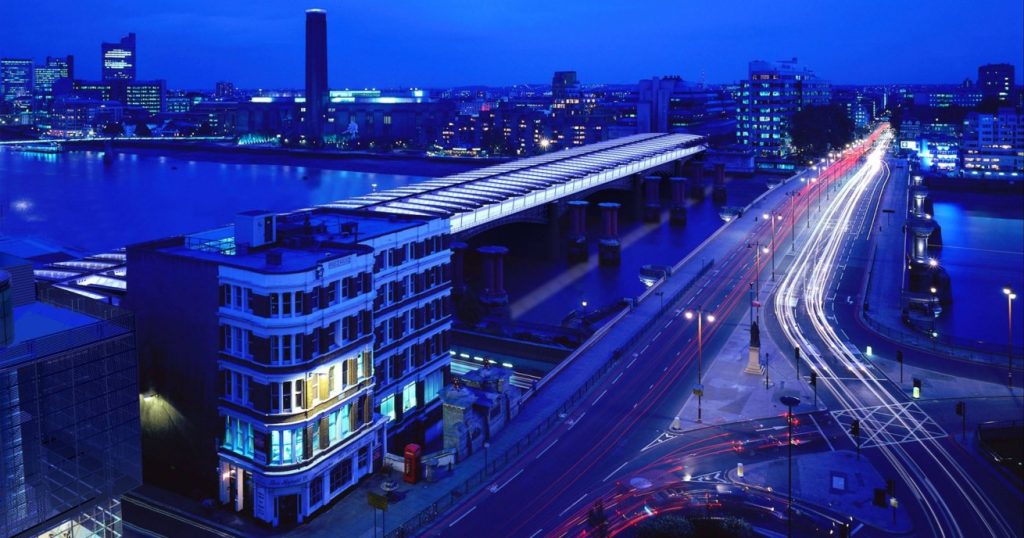
6 – Greener, cleaner seats
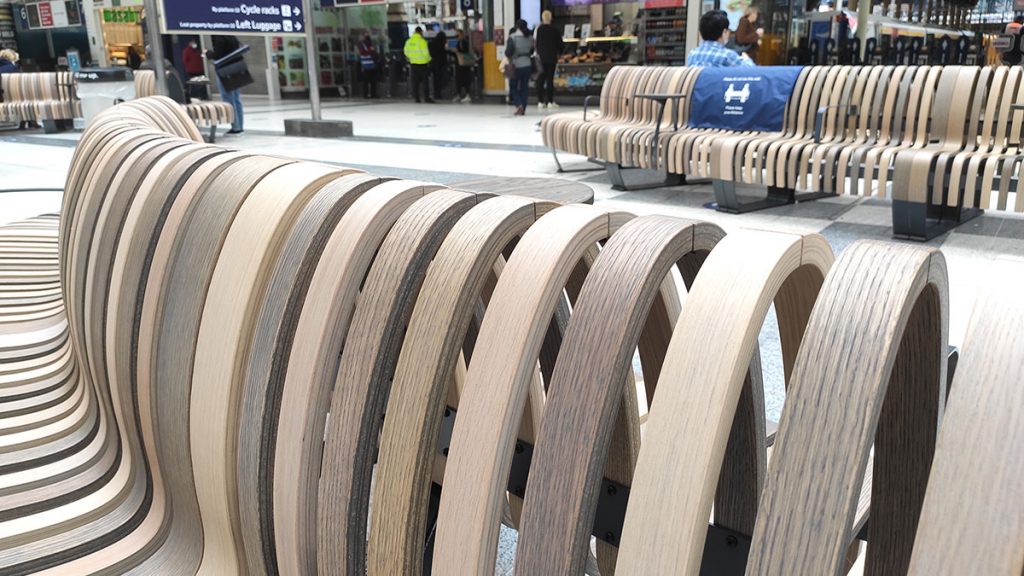
Last year we installed sustainably sourced seats at London Liverpool Street, almost doubling the seating capacity at the station, to 411.
The new furniture came with outstanding green credentials. The wooden seats themselves are oak and beech from 100% FSC certified sources. The legs are 85% recycled steel and the feet are made from recycled ocean plastic.
In addition, the seats are treated with natural wax rather than synthetic varnishes. They can be cleaned effectively with ordinary soap and water instead of chemical detergents.
Read more:
- Sustainability
- Environmental Sustainability Strategy
- Working with the environment
- Biodiversity Action Plan
- Our commitment to helping biodiversity
- Network Rail sets world-first targets to combat global warming
- Network Rail launches Environmental Sustainability Strategy
- World Environment Day 2020
- Q and A with Michelle Chrabalowski, environment specialist
- Q and A with ecologist Nathaniel Legall
